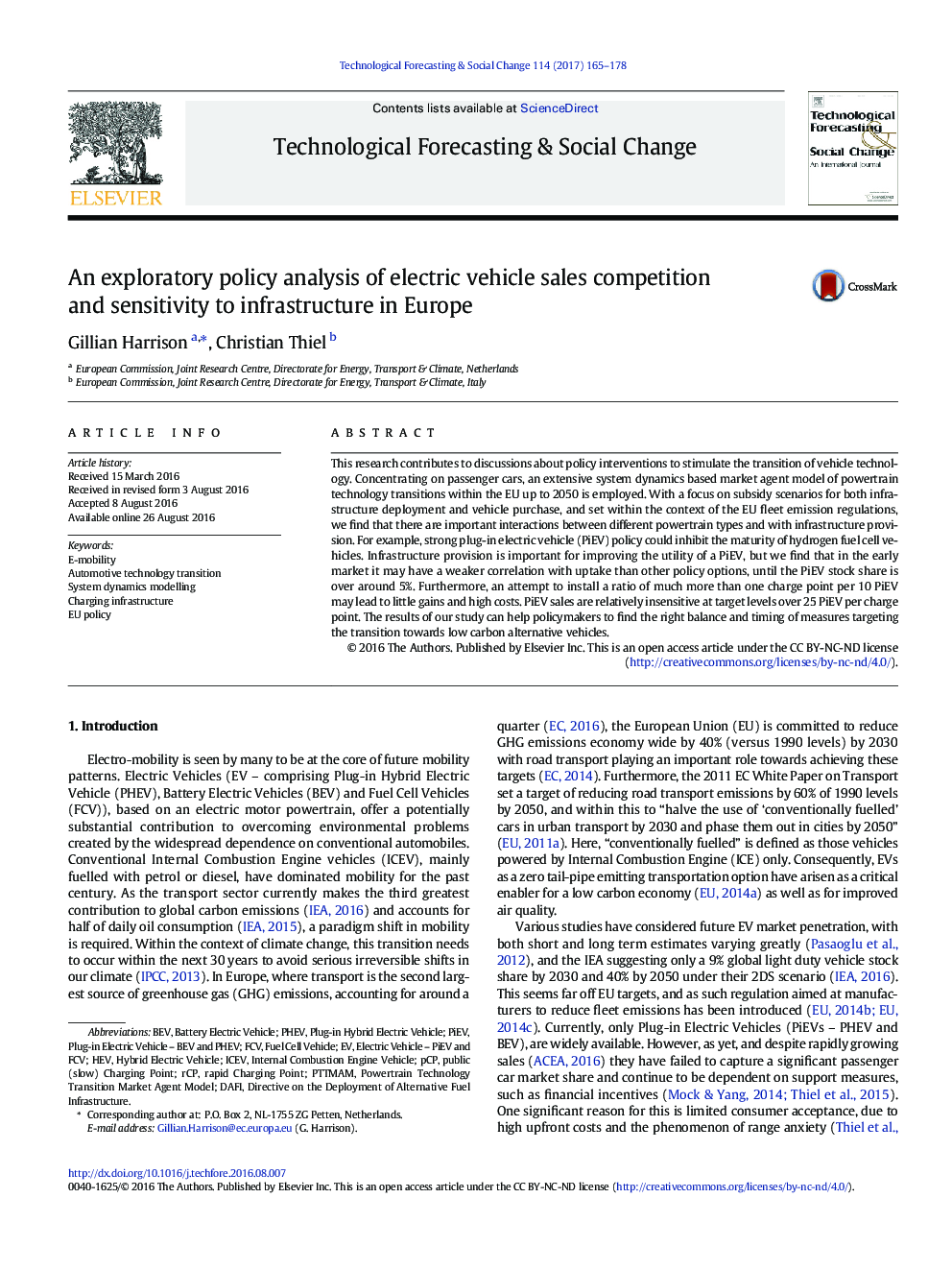| Article ID | Journal | Published Year | Pages | File Type |
|---|---|---|---|---|
| 5037193 | Technological Forecasting and Social Change | 2017 | 14 Pages |
â¢System dynamics market agent model of EU powertrain technology transitionâ¢Analysis of demand and supply stimulating policy mixes for low carbon cars.â¢Long term emission regulations needed for sustained transitionâ¢Early strong demand measures can lead to lock-in of immature technologies.â¢Optimal ratio of plug-in electric vehicles to charge points is between 5 and 25.
This research contributes to discussions about policy interventions to stimulate the transition of vehicle technology. Concentrating on passenger cars, an extensive system dynamics based market agent model of powertrain technology transitions within the EU up to 2050 is employed. With a focus on subsidy scenarios for both infrastructure deployment and vehicle purchase, and set within the context of the EU fleet emission regulations, we find that there are important interactions between different powertrain types and with infrastructure provision. For example, strong plug-in electric vehicle (PiEV) policy could inhibit the maturity of hydrogen fuel cell vehicles. Infrastructure provision is important for improving the utility of a PiEV, but we find that in the early market it may have a weaker correlation with uptake than other policy options, until the PiEV stock share is over around 5%. Furthermore, an attempt to install a ratio of much more than one charge point per 10 PiEV may lead to little gains and high costs. PiEV sales are relatively insensitive at target levels over 25 PiEV per charge point. The results of our study can help policymakers to find the right balance and timing of measures targeting the transition towards low carbon alternative vehicles.
